Mar
16
2016
Brent
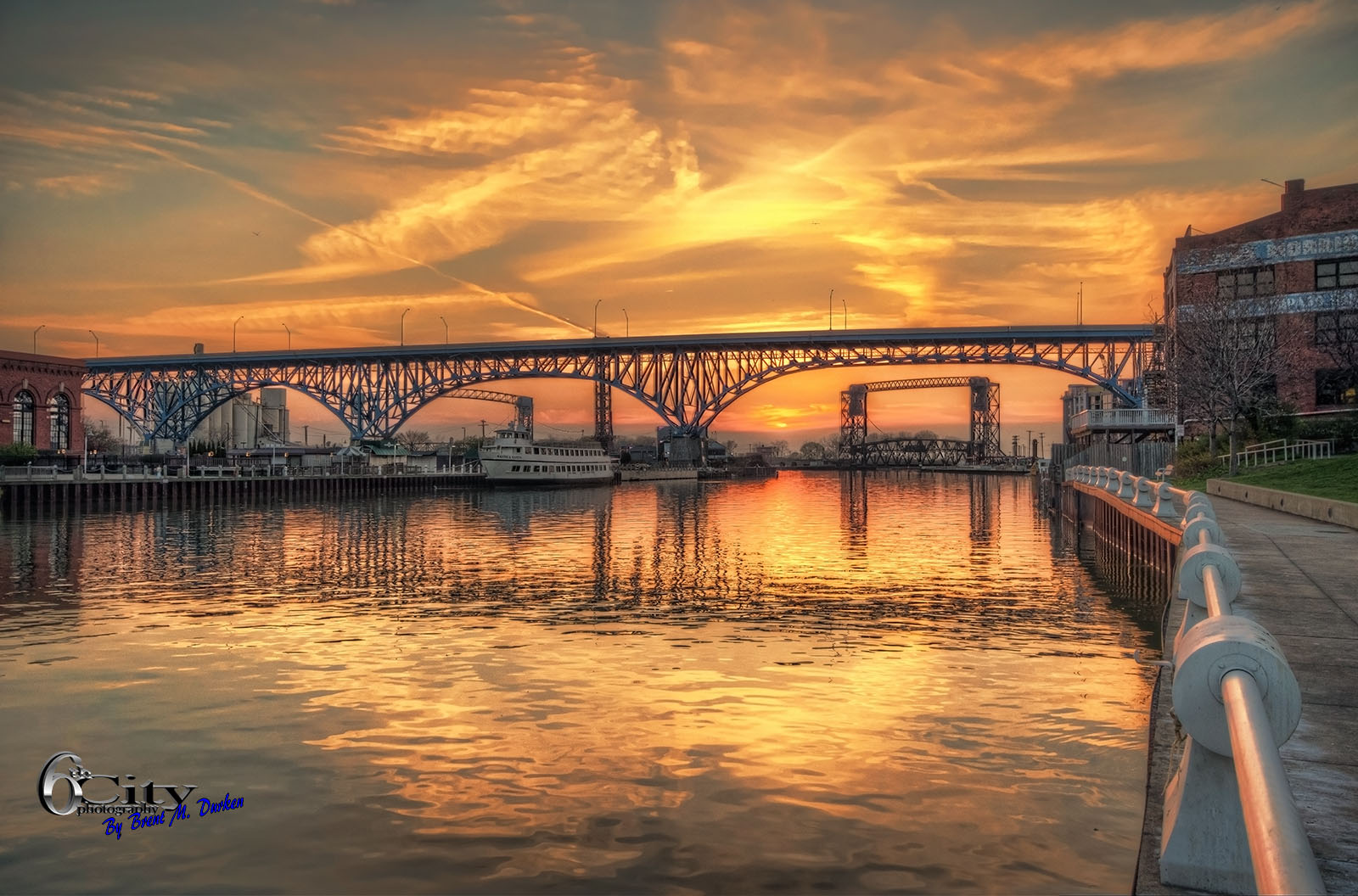
Info on the Cuyahoga River from Wikipedia: “The Cuyahoga River is famous for being “the river that caught fire,” helping to spur the environmental movement in the late 1960s. The name “Cuyahoga” is believed to mean “crooked river” from the Mohawk Indian name “Cayagaga,” although the Senecas called it “Cuyohaga,” or “place of the jawbone.” At least 13 fires have been reported on the Cuyahoga River, the first occurring in 1868. The largest river fire in 1952 caused over $1 million in damage to boats, a bridge, and a riverfront office building. On June 22, 1969, a river fire captured the attention of Time magazine, which described the Cuyahoga as the river that “oozes rather than flows”.
The 1969 Cuyahoga River fire helped spur an avalanche of water pollution control activities, resulting in the Clean Water Act, Great Lakes Water Quality Agreement, and the creation of the federal Environmental Protection Agency and the Ohio Environmental Protection Agency (OEPA). As a result, large point sources of pollution on the Cuyahoga have received significant attention from the OEPA in recent decades. These events are referred to in Randy Newman’s 1972 song “Burn On,” R.E.M.’s 1986 song “Cuyahoga,” and Adam Again’s 1992 song “River on Fire.” Great Lakes Brewing Company of Cleveland named its Burning River Pale Ale after the event. Water quality has greatly improved and, partially in recognition of this improvement, the Cuyahoga was designated one of 14 American Heritage Rivers in 1998″.
More info:https://en.wikipedia.org/wiki/Cuyahoga_River
All photos are copyright of Brent Durken – www.brentdurken.com
To purchase a digital download of this photo for your website or blog please visit: https://www.smugmug.com/gallery/n-zRG6xB/
Purchase a print of this photo: Brent Durken Print Sales
http://brent-durken.pixels.com/
no comments | tags: burning river, city, city scene, cityscape, Cle, Cleveland, Cleveland City, cleveland flats, Cleveland photograph, Cleveland photography, cleveland photos, cleveland skyline, Cleveland Skyline canvas, Cleveland Skyline prints, cuyahoga river, downtown, dynamic, erie, flats, green, hdr, high, metroparks, nature, Ohio, Photo, Photography, scenic, screensaver, sunset, Sunset on the Burning River Cleveland, urban Photography
Mar
2
2013
Brent
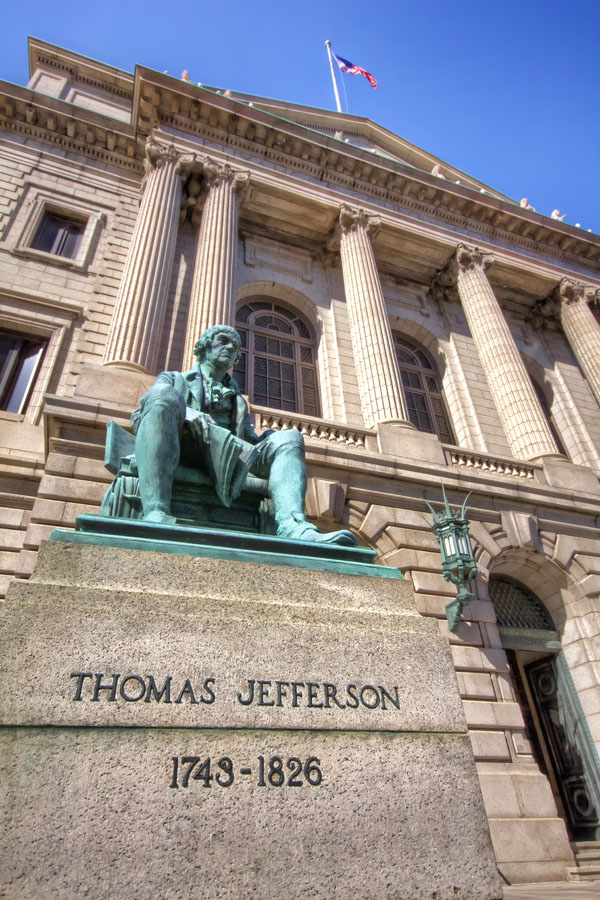
The Cuyahoga County Courthouse stretches along Lakeside Boulevard at the north end of the Cleveland Mall in downtown Cleveland, Ohio. The building was listed on the National Register along with the mall district in 1975.
From Wikipedia”
“The building was constructed from 1906–1912 by the architectural firm of Lehman & Schmitt. The building is Beaux Arts style and is constructed of Milford pink granite from Massachusetts. The rusticated masonry of the ground floor includes deeply recessed and arched windows and doors. A protruding keystone tops each one. The front entrance is flanked by bronze statues of Thomas Jefferson and Alexander Hamilton sculpted by Karl Bitter. Directly above the front entry doors are three large arched windows between fluted columns of the Ionic order allowing daylight into the courtroom within. The frieze of the cornice includes the inscription “Cuyahoga County Courthouse”. Above the cornice are several stone statues of historical law givers. Two of these figures, of Edward I and John Hampden, were sculpted by Daniel Chester French. The rear elevation facing Lake Erie is composed similarly, but with the inscription “Liberty is Obedience to Law”. A pediment with a plain tympanum surmounts the central element of the facade on both the north and south elevations”.
“If a nation expects to be ignorant and free in a state of civilization, it expects what never was and never will be… if we are to guard against ignorance and remain free, it is the responsibility of every American to be informed.” – Thomas Jefferson
no comments | tags: Cleveland, cleveland mall, Cleveland photography, cleveland photos, cleveland skyline, Cuyahoga County Courthouse, downtown, dynamic, group plan, high, Ohio, Photo, Photography
Feb
11
2013
Brent

Today’s Cleveland photo: The Charles Brush Memorial
Here is some information about Charles Brush from the Green Energy Ohio website: “Like fellow Ohioan Thomas Edison, Charles F. Brush, born in Euclid in 1849, was a restless backyard tinkerer and clever entrepreneur. A child prodigy, by age 15 he had built electrical gadgets and microscopes and telescopes for school chums. Brush graduated from the University of Michigan in 1869, with a degree in mining engineering. Brush is best remembered for his dynamo and arc lights, which illuminated a Cincinnati physician’s home in 1878 then Cleveland Public Square in 1879. These and more than 50 patented innovations made Brush a wealthy man. His company, Brush Electric Company, merged with companies that eventually formed General Electric, which still brings good things to light”. More info on Brush and his electric windmill: http://www.greenenergyohio.org/page.cfm?pageId=341
For more information about other famous Clevelanders check out the Citiview website: http://citiviewcleveland.com/features/famous-clevelanders/
“Men love to wonder, and that is the seed of science”. Ralph Waldo Emerson
no comments | tags: Charles Brush, Charles Brush Memorial, Cle, Cleveland, Cleveland photography, cleveland photos, downtown, hdr, high, lakeview cemetery, Ohio, Photo, Photography, scenic
Jan
12
2013
Brent

Today’s Cleveland photo was taken in Cleveland’s Little Italy:
From About.com: “Clevelands Little Italy neighborhood, located on Mayfield Road, just south of Euclid Ave., grew up in the late 19th century, fueled by scores of immigrants that came to the area to work as stone-cutters for nearby Lake View Cemetery and to work in clothing factories.
Early residents included Joseph Carabelli, who donated the land for Holy Rosary Church and helped to found Alta House, a charitable organization that still thrives.
Today, Clevelanders of Italian descent are located all over the city, but Little Italy retains that “Old World” flavor with restaurants, art galleries, and the popular “Feast of the Assumption” festival each August”.
For more info on Cleveland’s Little Italy visit:
http://cleveland.about.com/od/neighborhoods/ss/littleitalywalk.htm
http://ech.cwru.edu/ech-cgi/article.pl?id=LI1
“Remember, remember always, that all of us, and you and I especially, are descended from immigrants and revolutionists.”
― Franklin D. Roosevelt
no comments | tags: city, Cle, Cleveland, Cleveland photography, cleveland photos, Cleveland's Little Italy, culture, downtown, dynamic, hdr, high, little italy, little italy photo, mayfield rd., murry hill, Photo, Photography, street art, university circle
Jan
5
2013
Brent
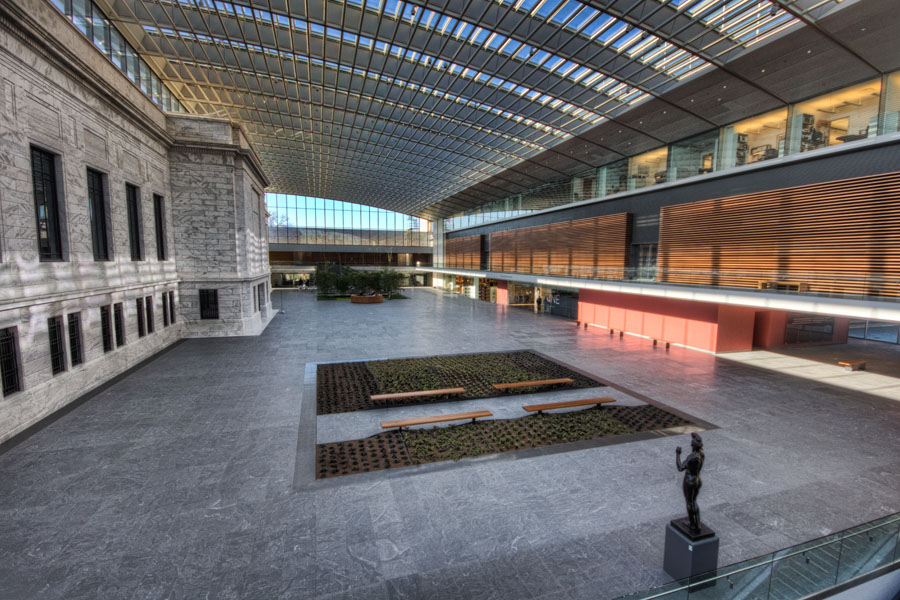
Atrium at the Cleveland Museum of art
From Cleveland.com: “In a way that’s palpable but hard to measure, Cleveland just became a better place to live, thanks to the completion of the new central atrium at the Cleveland Museum of Art.
This grand interior space — nearly as big as a football field — was intended by New York architect Rafael Viñoly to be the centerpiece of the $350 million expansion and renovation he designed for the museum a decade ago.
Now it has the chance to do that job, and much more.
The atrium opened at 10 a.m. Tuesday without fanfare, seven years after construction began at the museum and four years after the new and renovated galleries started opening. Director David Franklin and several staff members waited quietly in the low and shadowy North Lobby as the first visitors trickled past them to enter the atrium.
They gazed up, open-mouthed, at the skylight high overhead and slowed down to take in the surrounding architecture, which includes the restored north facade of the museum’s white marble 1916 building, plus Viñoly’s glass, wood and metal gallery and office areas, which will wrap the other three sides of the space when they’re complete.”
For more on this article and Structure:
http://www.cleveland.com/arts/index.ssf/2012/09/cleveland_museum_of_art_atrium.html
http://www.clevelandart.org/
Today’s Quote: ”All architecture is shelter, all great architecture is the design of space that contains, cuddles, exalts, or stimulates the persons in that space”. – Philip Johnson
no comments | tags: Atrium, Atrium at the Cleveland Museum of art, Cle, Cleveland, cleveland art museum, cleveland museum of art, Cleveland photography, cleveland photos, culture, dynamic, hdr, high, Photo, Photography, university circle
Aug
7
2012
Brent
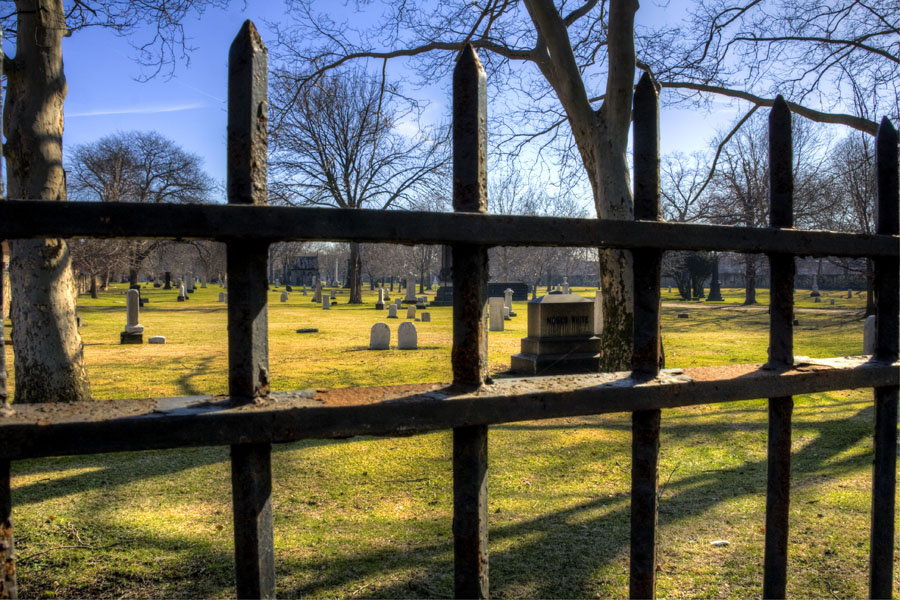
From The Encyclopedia of Cleveland History:
“ERIE ST. CEMETERY, preserving E. 9th St.’s original name, has been a municipal cemetery of controversy since 1826. Cleveland village trustees, desperate to replace the informal community burial ground south of Public Square with a permanent site, purchased the location for $1 from Leonard Case. So remote and spacious was the land that the council permitted a gunpowder magazine (1836) and a poorhouse-hospital on the unused portion. Disgruntled heirs of the original lot owners, claiming infringement of a covenant restricting use to burials, fruitlessly sued Cleveland in federal court (1836-42).For Progressives, beginning with Mayor Tom Johnson the cemetery mocked an efficient city. His administration, which developed Highland Park Cemetery (1904), reinterred bodies there, not without opposition, and reclaimed land from Erie St. for city streets. The struggle resulted in the Pioneers’ Memorial Assn. (1915), which was influential in the decision of City Manager William Hopkins in 1925 to build the proposed Lorain-Carnegie Ave. Bridge around rather than through Erie St. Cemetery. Following this, serious attempts to remove the cemetery ended. Complaints of neglect inspired WPA action, including erecting a fence fashioned from the demolished Superior Ave. viaduct’s sandstone. In 1940 the refurbished cemetery of historic graves, including that of Sauk Chief , was rededicated.”
For more info: http://ech.case.edu/ech-cgi/article.pl?id=ESC
“On the recollection of so many and great favours and blessings, I now, with a high sense of gratitude, presume to offer up my sincere thanks to the Almighty, the Creator and Preserver. “- William Bartram
no comments | tags: city, Cle, Cleveland, downtown, dynamic, erie, Erie Street cemetery, green, hdr, high
Jun
14
2012
Brent

Last night there was a Balloon Launch at Brunswick High School. Students, Brunswick residents and relatives of the victims filled the stadium to remember the four Brunswick High School students killed in a car crash in Columbia Township on June 3– Jeffrey Chaya, 18, Blake Bartchak, 17, Kevin Fox, 18 and Lexi Poerner, 16.
The only survivor, Julia Romito is recovering at home. Please remember to keep her in your thoughts and prayers as she continues to recover.
Today’s Quote: “Unable are the loved to die. For love is immortality”. ~Emily Dickinson
For more info about this: http://www.cleveland.com/brunswick/index.ssf/2012/06/response_to_tragic_events_make.html
no comments | tags: balloon, brunswick, Cleveland, dynamic, hdr, high, launch, Ohio, Photo, Photography
Jun
8
2012
Brent

From Wikipedia: “The lower Cuyahoga River has been subjected to numerous changes. Originally, the Cuyahoga River met Lake Erie approximately 4,000 feet (1.2 km) west of its current mouth, forming a shallow marsh. The current mouth is man-made, and it lies just west of present-day downtown Cleveland, which allows shipping traffic to flow freely between the river and the lake. Additionally, the U.S. Army Corps of Engineers periodically dredges the navigation channel of the otherwise shallow river to a depth of 27 feet (8.2 m), along the river’s lower 5 miles (8.0 km), from its mouth up to the Mittal Steel Cleveland Works steel mills, to accommodate Great Lakes freighter traffic which serves the bulk (asphalt, gravel, petroleum, salt, steel, and other) industries located along the lower Cuyahoga River banks in Cleveland’s Flats district. The Corps of Engineers has also straightened river banksand widened turning basins in the Federal Navigation Channel on the lower Cuyahoga River to facilitate maritime operations”.
no comments | tags: background, blue, city, Cle, Cleveland, culture, cuyahoga river, downtown, dynamic, erie, hdr, high, Manistee, Ohio, Photo, Photography, range, scenic, screensaver, Shipping on the Cuyahoga
Jun
1
2012
Brent
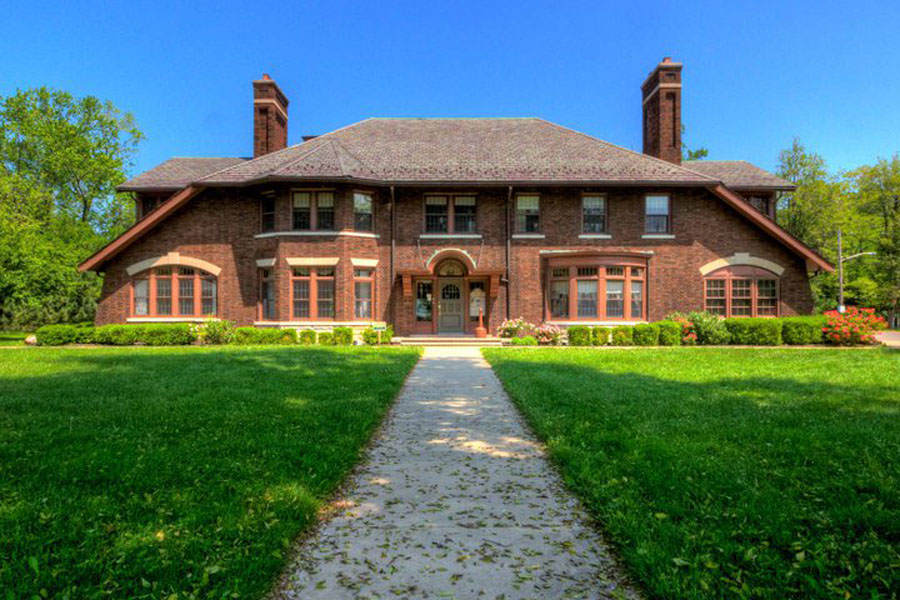
The Henn Mansion is one of those treasures that more Clevelanders need to know about. It is vaguely Tudor Revival in style with Bungalow/Craftsman overtones. It is a beautiful home and thanks to some wonderful volunteers it is still around to be enjoyed today. You can even rent it out for special occasions.
From the Henn Mansion Website:
Albert W. Henn was born at New Britain, Connecticut, January 26, 1865. His parents were Francis A. and Barbara Wilhelmy Henn. His father was born at Baden, Baden, Germany, April 1, 1825, came to America a political refugee in 1859. He was a gunsmith by trade and after coming to New Britain found employment in some of the big
hardware manufacturing houses, notably the firm of Russell & Erwin and Landers, Frary & Clark.
Albert W. Henn went to school until he was thirteen years of age completing the eighth grade. The boy went into the factory of Landers, Frary & Clark, covering a period of four years. At the age of nineteen he came to Cleveland and here secured a position as entry clerk with the wholesale dry goods house of Root & McBride, where he remained for thirteen years. During this period he had, apparently, little use for the mechanical knowledge he had secured in his boyhood, but when the opportunity came he found himself thoroughly interested and quite able to apply it.
Mr. Henn was married in Cleveland, April 17, 1889, to Miss Gertrude Jeannette Bruce, and they had six children, their first two sons, Jesse and William died in infancy
leaving three sons and one daughter surviving. Edwin C., a graduate of Cornell University; Howard R. a graduate of Yale University, Jeannette, a graduate of Vassar College; and Robert B a graduate of Cornell University.
Mr. Henn and his brother E. C. Henn patented the Multiple Spindle Lathe, (EC’s invention) which revolutionized the machine tool industry. Then they organized the Acme Machine Screw Company, with E. C. Henn as president and Albert W. Henn as secretary and treasurer. In 1902 they merged their enterprise with the National Manufacturing Company of Cleveland and changed their caption to the National-Acme Manufacturing Company.
Mr. Henn became Secretary of the concern at that time (1908), became treasurer, and was elected president in 1918. He was also treasurer and a director of the Maynard H. Murch Company, investments; president of the Goodhold Farm Company, vice president of the Ohio Muck Farm Company, and a director in the Lincoln Electric Company and the Winton Hotel Company.
For more photos inside the Henn Mansion:
http://www.hennmansion.org/
Today’s Quote: “Believe in yourself! Have faith in your abilities! Without a humble but reasonable confidence in your own powers you cannot be successful or happy”. – Norman Vincent Peale
no comments | tags: Albert Henn Mansion, Albert W. Henn, Albert W. Henn Mansion, city, Cle, Cleveland, culture, downtown, dynamic, erie, euclid, euclid mansions, green, hdr, high, Lake Erie, mansion, nature, Ohio, Photo, Photography, screensaver
May
24
2012
Brent

The ZZ Top Eliminator in the Rock and Roll Hall of Fame. This hot rod became a legend by appearing in several rock music videos.
For more info: http://auto.howstuffworks.com/zz-top-eliminator-hot-rod.htm
Today’s Quote: The best car safety device is a rear-view mirror with a cop in it. ~Dudley Moore
no comments | tags: background, city, Cle, Cleveland, downtown, hdr, high, Ohio, Photo, Photography, Rock and Roll Hall of Fame, rock and roll hall of fame induction ceremony 2012, zz top, ZZ Top Eliminator









